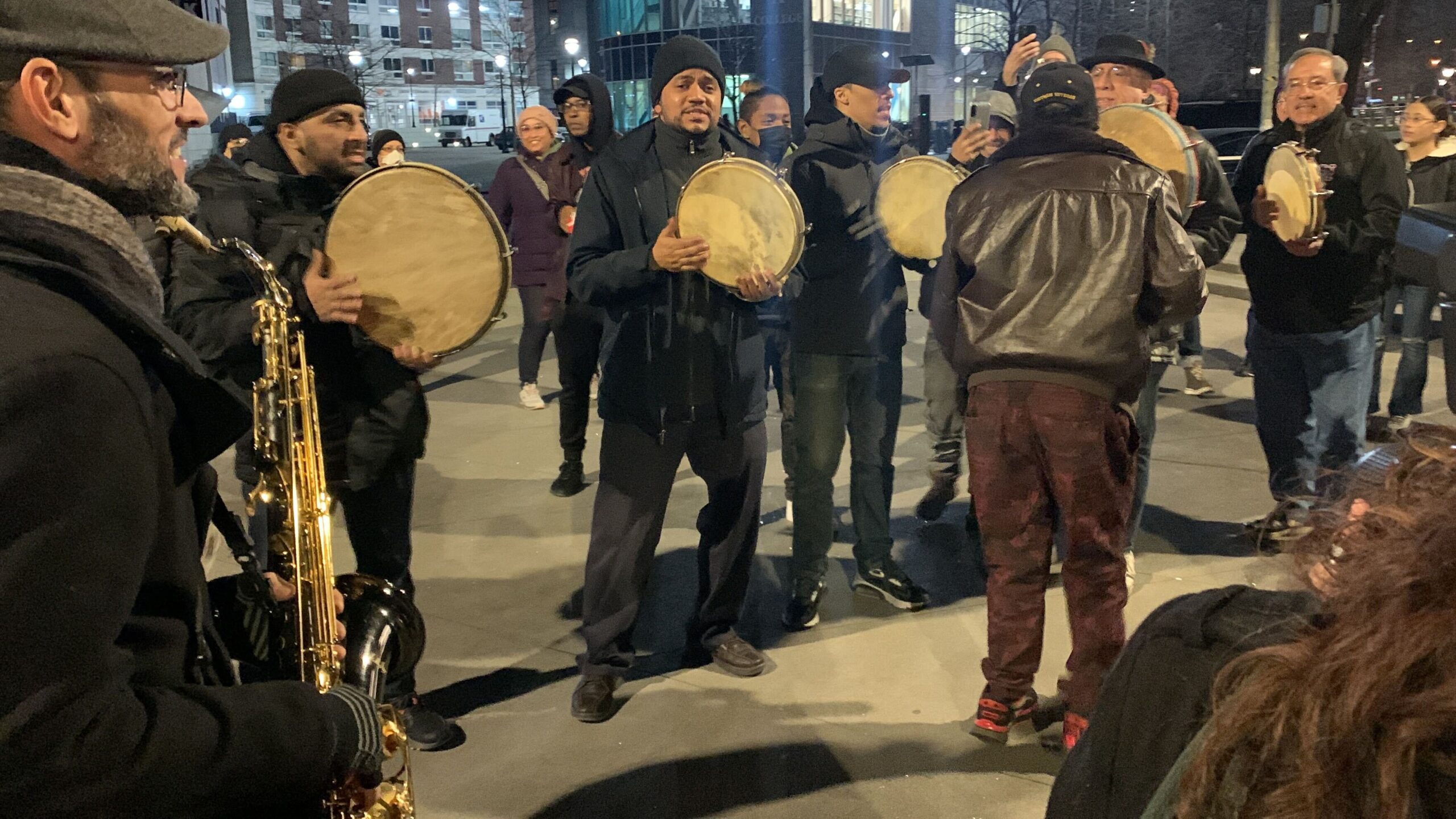A gradually expanding crowd of Bronx residents danced and sang throughout the streets of Melrose Wednesday evening to celebrate Christmas, Puerto Rican style.
The sounds of saxophones, trumpets, maracas, tambourines, guiros and panderetas filled the air as a group of musicians, or Parranderos, marched through the Melrose community for the Bronx Music Heritage Center’s eighth consecutive Melrose Parranda.
The center holds the procession every year in conjunction with Make Music New York, a non-profit organization that teams with community artists around the city to hold processions during the Winter Solstice on Dec. 21.
A parranda is a Puerto Rican tradition where musicians go from house to house on an asolto, a “musical assault,” singing Puerto Rican Christmas carols called Aguinaldos.
“This musical assault is one of the greatest gifts that you can receive from the community,” said Bobby Sanabria, Latin Jazz artist and co-artistic director of the Heritage Center. “It means that you are very respected and loved – and now it is their duty to join the parranda.”
And Melrose residents did just that.
Several people shouted “I haven’t seen this in forever” as the procession made its way down 163rd Street from its starting point at Bronx Commons.
Melrose resident Julia Molina rushed across the street when she heard sounds that reminded her of her home country. “We see this in Puerto Rico every Christmas,” she said with a big smile while nodding her head to the music. “Seeing this makes me feel like I’m home.”
But while the Melrose Parranda sticks to tradition in many ways, there is one slight difference.
“If you were in Puerto Rico, you’d be going from house to house,” said Elena Martinez, co-artistic director of the Heritage Center. “Here we’re going from casita to casita.”
Casitas are small wooden houses built in community gardens to replicate the ones commonly seen in Puerto Rico. “The Melrose community has one of the largest concentrations of casitas in the city,” said Martinez.
The Parranda traveled through several casitas plus a supermarket before making its way to its final stop at the the oldest and largest casita in New York City, Rincon Criollo, also known as “Casita de chema.” Desseree Soto, The daughter of the casitas founder, José Manuel “Chema” Soto, welcomed participants with hot chocolate and rice pudding.
“This is the most important edifice for the Puerto Rican community outside of the island,” said Sanabria as he walked down from the stage at the side of the casita. “When we perform here, it’s not just entertainment. It’s an act of love and a way to share our culture.”
To learn more about the history of Bronx music and upcoming events from the Bronx Music Heritage Center, visit Thisisbronxmusic.org and follow the Bronx Music Heritage Center Facebook page.

